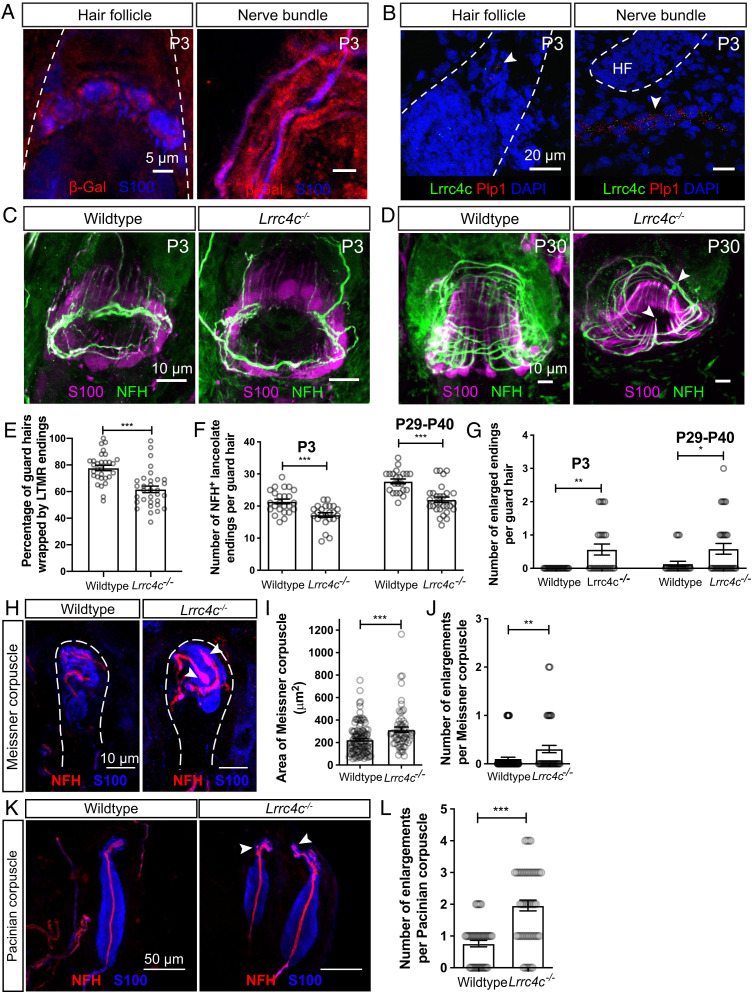Fig. 6.
NGL-1 is expressed in terminal Schwann cells and contributes to the formation of lanceolate endings, Meissner corpuscles, and Pacinian corpuscles. (A) Wholemount IHC images of P3 back hairy skin sections (n = 3 animals), showing that β-Gal (red) is detected in S100+ terminal Schwann cells and nonmyelinating Schwann cells (blue). Hair follicles are outlined with white dotted lines. Skin from wild-type animals was used as negative controls and no β-Gal signal was observed. (B) Example images of smRNA-FISH for P3 back hairy skin sections (n = 3 animals). White arrowheads denote the detection of Lrrc4c mRNA (green) near Plp1 mRNA (red). Hair follicles are outlined with white dotted lines. DAPI staining labels nuclei. (C and D) Wholemount immunostaining images of guard hairs in back hairy skin of P3 (C) and P30 (D) wild-type and Lrrc4c−/− animals. (E) Quantification of the percentage of guard hairs wrapped by NFH+ lanceolate endings in P0 wild-type (30 hair follicles from three animals) and Lrrc4c−/− animals (32 hair follicles from three animals). Each dot represents the result for one guard hair in back hairy skin. (F and G) Quantification of the number of NFH+ lanceolate endings (F) and the number of enlarged endings (G) in wild-type (24 hair follicles from four animals for P3; 22 hair follicles from three animals for P29–P40), and Lrrc4c−/− (23 hair follicles from three animals for P3; 29 hair follicles from four animals for P29–P40) animals. (H) Representative IHC images of forepaw glabrous skin sections of wild-type and Lrrc4c−/− animals. (I and J) Quantification of the area (I) and number of enlargements (J) of Meissner corpuscles in the wild-type (34 skin sections from four animals) and Lrrc4c−/− mice (32 skin sections from four animals). (K and L) Representative IHC images (K) and quantification of the number of enlargements per Pacinian corpuscle (L) of adult wild-type (20 corpuscles from three animals) and Lrrc4c−/− mice (36 corpuscles from three animals). Each dot represents a single Pacinian corpuscle. Student’s unpaired t test. *P < 0.05, **P < 0.01, ***P < 0.001.

